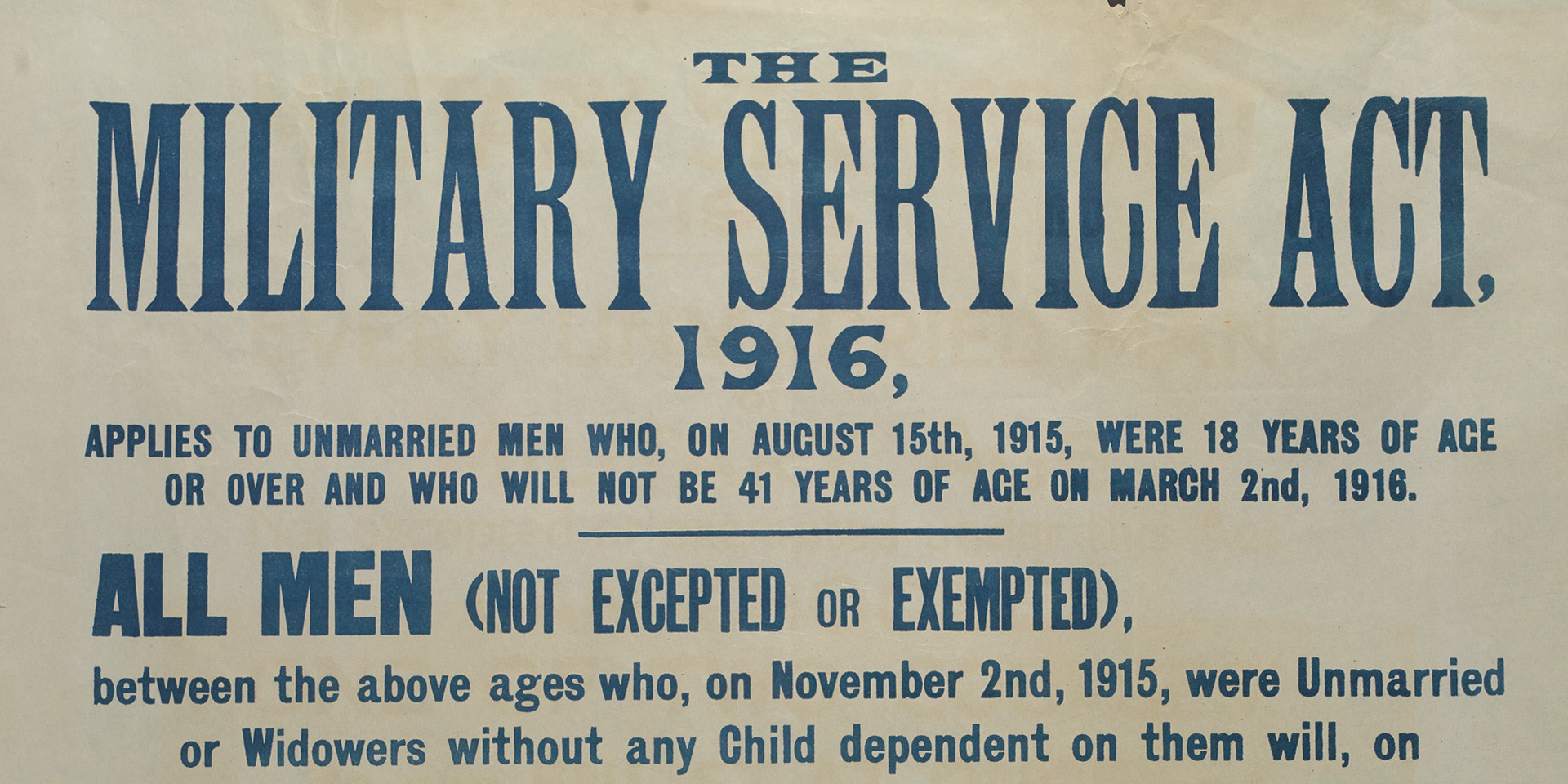Does your country have the right to make you fight? MPs debate conscription
On 15 November 2016 the National Army Museum will be holding a parliamentary debate with cross-party MPs including Kirsten Oswald SNP, historian Lord Bew and author Will Ellsworth-Jones. They will discuss the question 'Does your country have the right to make you fight?' as the country marks the 100th anniversary since the introduction of conscription.
Conscription was first introduced during the First World War in 1916, and continued on and off until the National Service Act was repealed in 1963. Experts at the National Army Museum estimate that if the criteria for conscription was updated for the current day, over 10 million British citizens1, both men and women, would be legally obliged to fight. This would leave behind only the disabled, the elderly, and those in professions beneficial to both those at war and on the Home Front.
"As a society we continually grapple with the question of military service, and whether citizens have a duty to serve their country. We’ve partnered with Parliament to find out what citizenship means to people, and if the call came, whether they would take up arms" says Katy Jackson, Public Programmes Manager. "When the new museum opens in 2017, we’ll be asking people to take a view on the army through our redesigned exhibitions and innovative events programme".
Research is being shared ahead of the debate in partnership with the Houses of Parliament. Only one third (33%) of Britons would take choose to take a combative role if Britain went to war today. If a war on the scale of the First World War broke out today 37% of the 10 million potential conscripts would be ‘conscientious objectors’ - refusing to fight for political or ideological reasons. This is equivalent of 3.8 million men and women2, in comparison to just 16,000 men (around 0.6% of the population eligible for conscription) who objected during the First World War3.
According to the study, which was commissioned to commemorate the 100-year anniversary of the introduction of conscription in the UK, a further three in 10 (31%) said it would depend on why the war was being fought, with nearly half (45%) of those saying they would fight if they thought their family's human rights were directly under threat. However, more than a third (35%) of people said they would accept a non-combatant role.
Alongside the panel debate and commissioned research, the National Army Museum has an online video featuring recreated political speeches from 1916, for and against conscription and an online poll where you can then decide whether your country has the right to make you fight. The Museum is encouraging people to watch the live-stream of the debate and share their own views on Facebook and Twitter using #ArmyandSociety.
Footnotes
1 There are currently 50.9 million adults over the age of 18 according to figure 5 of ONS Overview of the UK population (February 2016). According to the research, 20% of the adult population would be eligible for conscription today - or 10.2 million people. Eligibility for conscription was based on the same criteria as in May 1916, except women and students (who experts believe were exempt as a result of politicians’ personal interests, but would be included today) were included. Originally, all male British residents between the ages of 18 and 42 who were unmarried and over 5”3’ tall were conscripted, as long as they were not widowed with children, serving in other national service areas (The Navy and the RAF), university students, medically unfit, or working in a reserved occupation (teachers, doctors, nurses, firemen, politicians, factor workers and farmers). Married men were included from May 1916.
2 37% of the population would be conscientious objectors, therefore of the 10.2 million people conscripted 3.8 million people would object.
3 There were approximately 16,000 British men on record as conscientious objectors to armed service during the First World War, according to the Imperial War Museum. The percentage of those eligible for conscription was calculated by taking 16,000 as a percentage of the total number of people conscripted (2.5m according to the government) – 0.64%.
Panelists:
- Lord Bew
- Gisela Stuart
- Kirsten Oswald
- Julien Brazier
- Will Ellsworth-Jones
- Chaired by the BBC’s Defence Correspondent, Jonathan Beale
Notes for editors
For more information, please contact the National Army Museum press office at pr@nam.ac.uk or 020 7881 2433.
About the research
The research was carried out by Opinium Research on behalf of the National Army Museum between 8-12 July 2016. The survey of 2,014 UK adults was weighted to be nationally representative.
National Army Museum
The National Army Museum is the leading authority on the history of the British Army. Founded in 1960 by Royal Charter and established for the purpose of collecting, preserving and exhibiting objects and records relating to the Land Forces of the British Crown it is a museum that moves, inspires, challenges, educates and entertains.
The Museum tells the story of the British Army, the personal experiences of the soldiers who have served and connects the British public and its Army demonstrating how the role of the Army and its actions are still relevant today.
Heritage Lottery Fund
Using money raised through the National Lottery, the Heritage Lottery Fund (HLF) aims to make a lasting difference for heritage, people and communities across the UK and help build a resilient heritage economy. HLF has supported 36,000 projects with £6bn across the UK.
For more information, please contact Katie Owen, HLF press office, on tel: (020) 7591 6036 out of hours mobile: 07973 613820.


